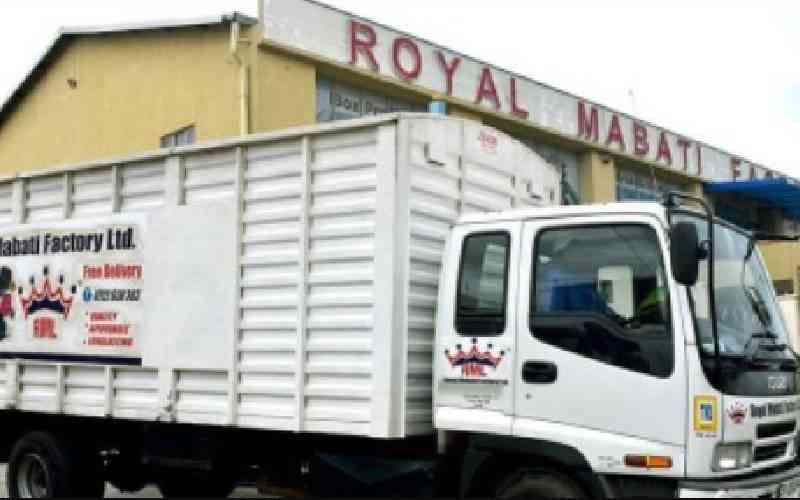JECKONIA OTIENO visited the Savannah Resort in the rocky escarpment of Ngong Hills where he enjoyed a magnificent view of Loita Hills, Olorgesailie and Mt Longonot
If you love adrenalin-filled sports like rock-climbing, Savannah Sunset Resor-Ololosokuan on the slopes of Ngong Hills is the perfect place to be. Rather than just climb the hills, another option is to walk down the valley and climb the rocky gully.
It is difficult to imagine that a rocky gully would leave you gasping for breath, but the truth is that at Ololosokuan, it is all systems go when you decide to venture out; if you give up midway, the journey back is as long and rugged as the one ahead.
The trail that starts up the cliff into the vast Rift Valley and back to the top is an experience of a lifetime — full of thrills, chills and fears. It calls for time, patience and a diehard spirit.
From Ngong town, it is a kilometre or so of tarmac, which, without warning, becomes a rocky affair connecting Ngong and Narok. The corrugated stretch winds beside an escarpment and it branches off into the camp — Ololosokuan.
Even before getting into the camp, one has the opportunity to see the endless stretch of the valley below. The famous Mount Suswa, known for its dark caves, is visible in a distance. It is actually one of the places visitors to this camp can visit.  |
Some of the rocky gullies [Photo: Jeckonia Otieno/Standard] |
Rock art
Afar off, there are scattered settlements on the lower slopes of the hills. Higher up the hill are windmills. Before starting the descent from the camp, one thing is clear: This scarp offers an undisputed 180-degrees view of the Great Rift Valley, the best being at sunset.
A clear view of Ngong Hills from a different perspective is also guaranteed. Other areas visible from the scarp are Loita Hills, Olorgesailie and Mt Longonot — but on a clear morning or evening.
From the numerous plant species camouflaging the rocks to the antelopes in the valley below, there is a sure testimony that life is supported in this rocky escarpment.
The campsite is in three levels since it is situated on the fault steps. The first campsite is a few metres from the road while the second is a few rocks down the step. The third one is a spinning distance from the second one.
Rock art is the first eye catcher as you get down the floor of the vast valley. An artist took his time to draw the map of Africa on one of the rocks. The tents add to the wilderness feeling of home and away. Everything about the Savannah Resort, including the washrooms that are built on the side of an imposing boulder, is undomesticated.
As we start our descent to the valley, I cannot stop marvelling at the imposing rocks and how dangerously they hang, yet have to pass right beside them on the side overlooking a cliff.
One level down and we are hypnotised that the floor of the valley is just a step away, but we are mistaken; we cannot just jump from this floor to the valley, but have to go round as if circling the slope then start descending again.
It is quite daunting to crawl through thickets, but we are informed that there is no other route.
In the valley below, there are pools that form in the rainy season. They give life to the animals in the jungle.
The journey down is proving challenging since we have to squeeze through two enjoined boulders.
Numerous birdlife
Once on the floor, we have an opportunity to interact with the numerous birdlife. A trail leads towards the Karia River bed, which although dry is the main trail and hiking experience of this site.
The side of the escarpment offers a clear view of the huge boulders and the species of trees that conceal them.
We find dikdik droppings collected at a single spot and we are informed that these herbivores do not leave droppings unless they are assured of their safety.
Baboons are common in this area, often spending nights near the camp for safety. But they do not spend more than a night at the same place — talk of animal intellect or mere instinct that enables survival in the jungle.
The journey up the dry river valley starts without warning. We have to skip the rocks with utmost care because a single miscalculated step means a fatal fall.
The banks of the river valley are short in some instances, but rising as high as five metres in some areas, leaving us feeling like ants buried in the floor with rocks strewn all around us.
There are puddles of stagnant water heavily infested with mosquitoes, which rise in a buzz as we pass by.
Gully creeping
After gully creeping for a while, we get to the seasonal Karia Falls, which is dry since there has not been heavy rainfall. We have to lumber up the cliff because going back is not an option.
I feel fear welling up in my belly but with time, after watching the tour guide go up, I muster courage and take on it. All the while I am reflecting on what any miscalculated step would mean, but we all make it safely.
Birds flit around us as geckos nod before vanishing under the rocks. We have a chance to see a hyrax from a distance, but it soon disappears when it when we head in its direction.
As we continue climbing, we cannot help gazing at the valley below us. Beside the gully carpeted with rocks lies lush vegetation that would make the rainforests of Western Kenya go green with envy.
The sun’s piercing rays add to the picturesque view as they penetrate the valley through the rocks. Evening is fast approaching and we have to keep moving to ensure we are not enveloped by darkness in a desolate river valley infested with wild animals.
The final stretch is the most difficult as it involves getting over a series of precariously hanging rocks to get back to civilisation. Some of us had to be helped to get on top of the escarpment.
Panting and breathless, we manage to get back on top of the cliff from where we behold the beauty of the sunset and enjoy the fresh, strong breeze from the Ngong Hills. We have come full circle and it is quite an experience.
We walk back the one-kilometre stretch to the camp, worn out but still enjoying the evergreen splash that lies around us. One thing is sure; it is necessary to leave home once in a while and just tour the beautiful country, Kenya.
 The Standard Group Plc is a multi-media organization with investments in media
platforms spanning newspaper print operations, television, radio broadcasting,
digital and online services. The Standard Group is recognized as a leading
multi-media house in Kenya with a key influence in matters of national and
international interest.
The Standard Group Plc is a multi-media organization with investments in media
platforms spanning newspaper print operations, television, radio broadcasting,
digital and online services. The Standard Group is recognized as a leading
multi-media house in Kenya with a key influence in matters of national and
international interest.
 The Standard Group Plc is a multi-media organization with investments in media
platforms spanning newspaper print operations, television, radio broadcasting,
digital and online services. The Standard Group is recognized as a leading
multi-media house in Kenya with a key influence in matters of national and
international interest.
The Standard Group Plc is a multi-media organization with investments in media
platforms spanning newspaper print operations, television, radio broadcasting,
digital and online services. The Standard Group is recognized as a leading
multi-media house in Kenya with a key influence in matters of national and
international interest.










